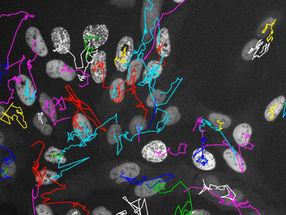Obesity: Genetic predisposition as cause, drugs from diabetes therapy help
Severe overweight or obesity is one of the most important risk factors that can be influenced for the development of type 2 diabetes. Obesity, or severe overweight, often develops in sufferers during childhood and adolescence. Before 2020, one in seven children in Germany was obese - a trend that has now increased further since 2020 with the effects of the corona pandemic.

Symbol image
Photo by Warren Umoh on Unsplash
A representative Forsa survey conducted by the German Obesity Society (DAG) and the Else Kröner-Fresenius Center (EKFZ) for Nutritional Medicine at the Technical University of Munich showed that one in six children in Germany gained weight, almost half exercised less than before and about a quarter ate more sweets. Experts expect a further increase in diabetes cases in the coming decades. The German Diabetes Society (DDG) emphasizes the importance of prevention and is increasingly campaigning to destigmatize non-communicable diseases such as obesity and type 2 diabetes.
During the corona pandemic, 39 percent of Germans gained an average of 5.6 kilograms, while people with obesity gained as much as 7.2 kilograms. "Nationwide, 800,000 children and adolescents suffer from obesity, including about 100,000 adolescents with extreme obesity," says Professor Martin Wabitsch, MD, head of the Department of Pediatric Endocrinology and Diabetology and the Endocrinology Research Laboratory at the University Hospital for Children and Adolescent Medicine in Ulm. He adds, "A significant proportion of adolescents with extreme obesity already have impaired glucose tolerance." Currently, the pediatric diabetologist and endocrinologist is treating a 15-year-old patient with obesity in his consultation hours who already has type 2 diabetes.
"Our current living conditions - with a lack of exercise and with an always-available surplus of calorie-rich food - play a major role in the development of obesity," Wabitsch explains. Today, however, it is also known that those affected have a genetic predisposition to obesity: "We are constantly discovering new genes and gene variants that influence body weight under the given living conditions." In about one in five children with severe obesity, there is a gene variant in the genome that is responsible for a malfunction of hunger or satiety regulation in the brain, he said. "These young sufferers develop obesity as early as preschool age," Wabitsch says. For them, behavioral therapy approaches without further treatment show an unsatisfactory result in terms of weight control.
Recently, the drug liraglutide, which is already used in adults to treat type 2 diabetes and obesity, has also been approved for treatment in children and adolescents aged 12 and older. Liraglutide belongs to the class of drugs known as incretin mimetics or GLP-1 receptor agonists. "This drug mimics the satiating effect of the gut hormone GLP-1 and works well in combination with lifestyle adjustment, i.e., more exercise and dietary changes," Wabitsch explains. "The young patients experience satiety instead of constant hunger for the first time with this combined therapy - a completely new attitude toward life." The still new knowledge about the genetic causes of obesity and also the effect of new medications helps to provide psychological relief for those affected and their families, he adds. "We need to destigmatize the disease obesity in society, but also in the medical system," Wabitsch emphasizes. The new obesity disease management program, which is currently being developed by the Federal Joint Committee (G-BA), could also contribute to this. There are already plans to develop a separate structured treatment program for children and adolescents with obesity once it has been approved. This will recognize obesity as a disease and enable children and adolescents to receive treatment in accordance with the evidence-based guidelines.
Note: This article has been translated using a computer system without human intervention. LUMITOS offers these automatic translations to present a wider range of current news. Since this article has been translated with automatic translation, it is possible that it contains errors in vocabulary, syntax or grammar. The original article in German can be found here.
























































